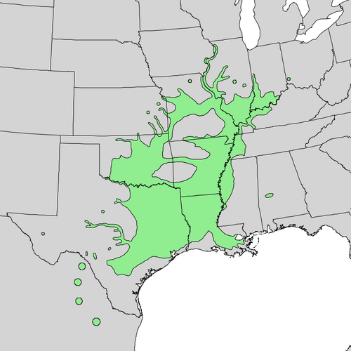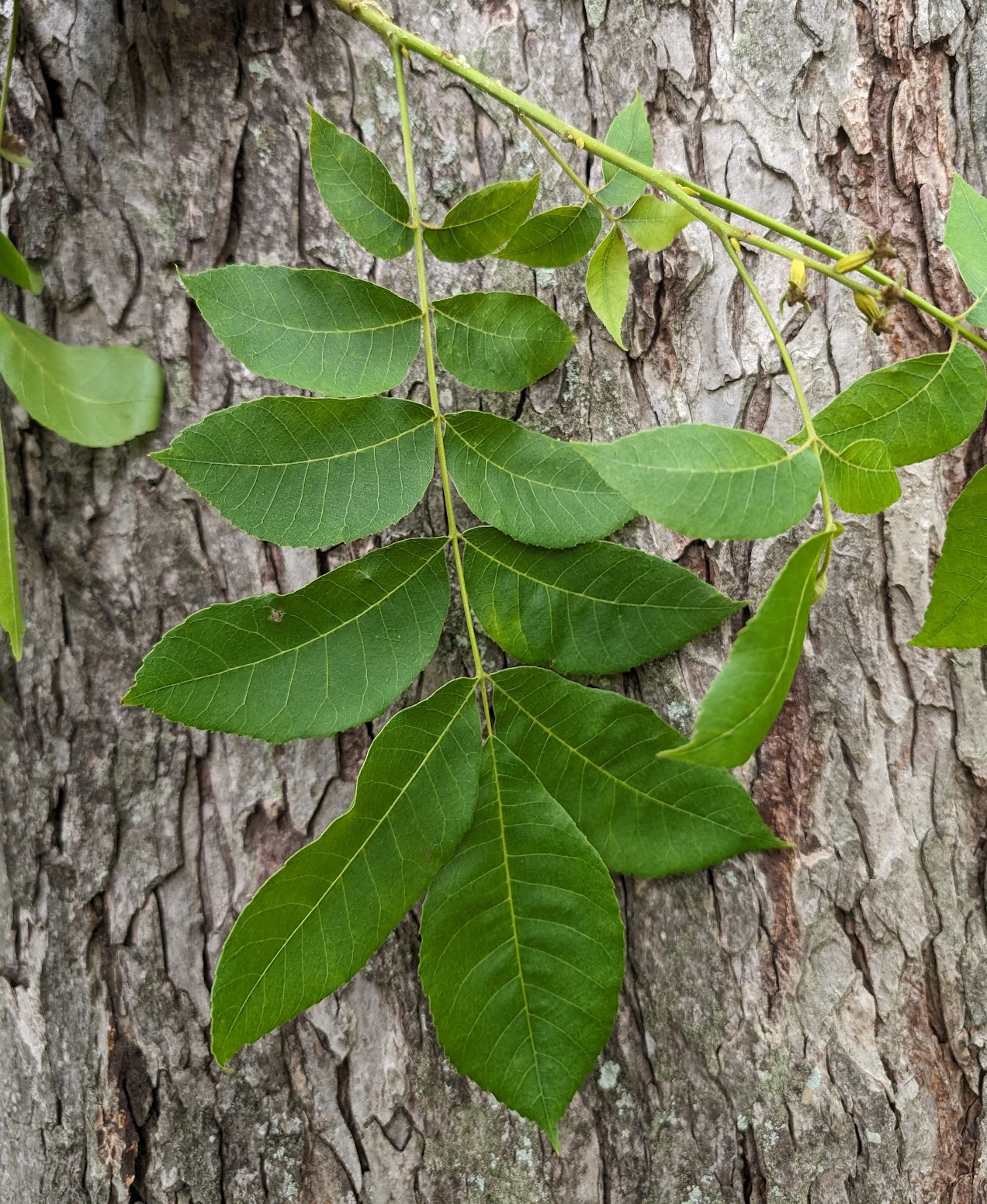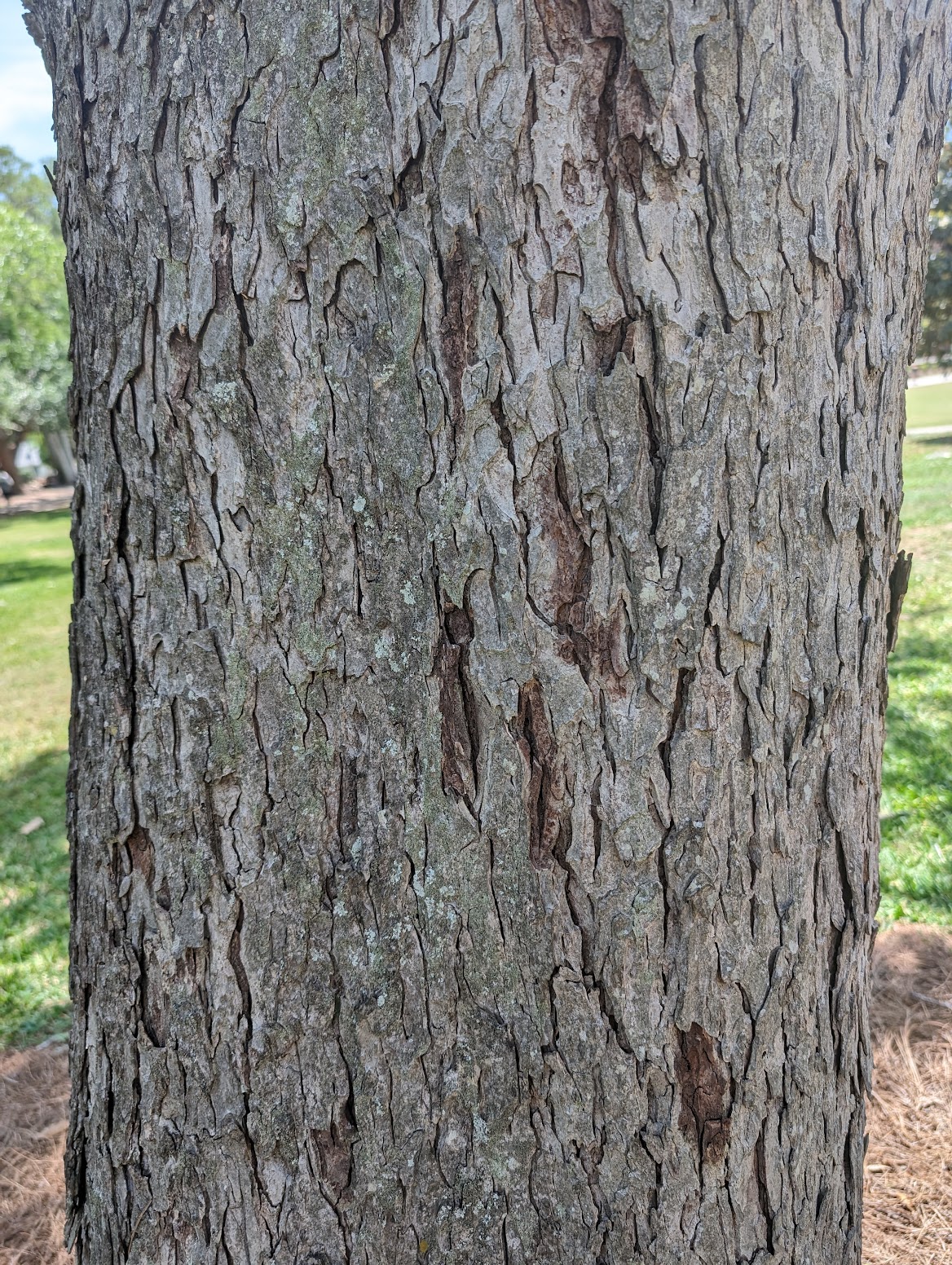Juglandaceae – Walnut Family
In 2024, this specimen of pecan measured 85.4 feet tall and had a diameter of 26.1 inches. Based on USDA Forest Service models, it will absorb approximately 2,999.54 lbs. of carbon over the next 20 years. Put simply, this tree alone will offset up to 12,138 car miles worth of carbon dioxide.
See all species on our Campus Tree Tour.
Introduction
The pecan tree is the largest hickory native to the Southwestern United States. Reaching up to 130 feet tall, its massive branches, grey bark, and scythe-shaped leaflets create an attractive shade tree. The pecan nut is popular in culinary applications, particularly desserts, around the world. Its timber is used to create a variety of furniture, and it is commonly used as firewood.
Physical Description
Life expectancy: Up to 300 years
Height: 70 – 100 feet, occasionally up to 130 feet
Crown: 40 – 75 feet
Diameter: Up to 72 inches
Bark: Tan, grey bark that becomes narrowly fissured with plates that peel off as it matures.
Leaves: Deciduous, alternately arranged upon the stem, and oddly-pinnately compound (multiple leaflets). Leaflets are falcate (scythe-shaped) with serrated margins (edges) that are dark green on top and a lighter green underneath.
Flowers: Yellow green catkins (male flowers) in pairs of three, and spikes (female flowers that emerge from April through May.
Fruits: Green to brown nuts (1 ½ to 2 inches) enclosed in a smooth husk that matures in late summer and early fall.
Key Identification Characteristics: bark, compound leaves, nuts
Past and Present Uses
Historically, indigenous Americans used pecan nuts as an important food source; they fermented the pecans to create a drink called “Powcohicora,”, which the word “hickory” originated from. European colonists began cultivating pecans during the 18th century, exporting the coveted nut to Europe and the East Indies.
Currently, pecan cultivars are extensively grown in America, making the United States the world’s largest pecan-producing country. In addition to having valuable fruit, its timber is used for furniture, cabinetry, and veneer. Lastly, this tree is well suited as a shade tree in large landscapes, requiring plenty of room to grow if planted in an urban setting.
Ecological Importance
Origin: Native to the United States but not Florida
Native Range: Found west to Kansas, east to Tennessee, and south to Louisiana. Also grows in northeastern and central Mexico (Figure 1).

Figure 1. Native range of Pecan. Photo credit: U.S. Geological Survey
Pecan trees grow in humid climates and are commonly found on well-drained soils with minimal flooding. Pecan trees develop well on ridges and well-drained flats, and they are also found on old home sites. In a forest setting, this tree is associated with American sycamore, American elm, green ash, and sugarberry.
Pecan nuts are a popular food source for various wildlife species. The sweet nuts are favored by mammals like squirrels, deer, and foxes, as well as birds like wild turkeys, crows, and blue jays.
More Information
https://edis.ifas.ufl.edu/publication/ST122
References
Blayney, D., Gutierrez, P., Clevenger, T., & Blake, M. (2017). Economic importance of the pecan industry: New Mexico State University - be bold. shape the future. Economic Importance of the Pecan Industry. https://pubs.nmsu.edu/_z/Z501/index.html#:~:text=The%20United%20States%20is%20th ,that%20developed%20under%20natural%20conditions
Hayman, V. (2024, April 1). Pecans: Historically Delicious. Appetite for Knowledge. https://uwyoextension.org/uwnutrition/newsletters/pecans-historically-delicious/
i-Tree. (2006). Tree tools - calculate the benefits of trees!. i-Tree. https://www.itreetools.org/
Peterson, J. K. (n.d.). Pecan. Carya illinoensis (Wangenh). https://www.srs.fs.usda.gov/pubs/misc/ag_654/volume_2/carya/illinoesis.htm
The Arnold Arboretum of Harvard University. (n.d.). Carya illinoinensis. Tree of the Month. https://arboretum.harvard.edu/wp-content/uploads/2022/08/Tree-of-the-Month_Carya-illinoinensis-2022rm.pdf


